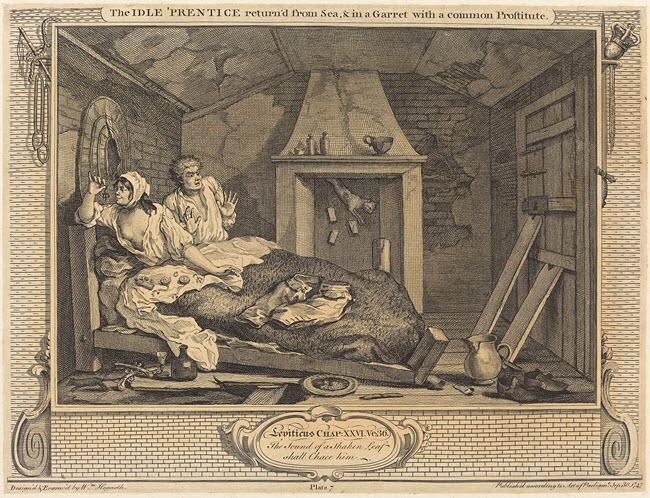Ursula Vernon | Nurk: The Strange, Surprising Adventures of a (Somewhat) Brave Shrew
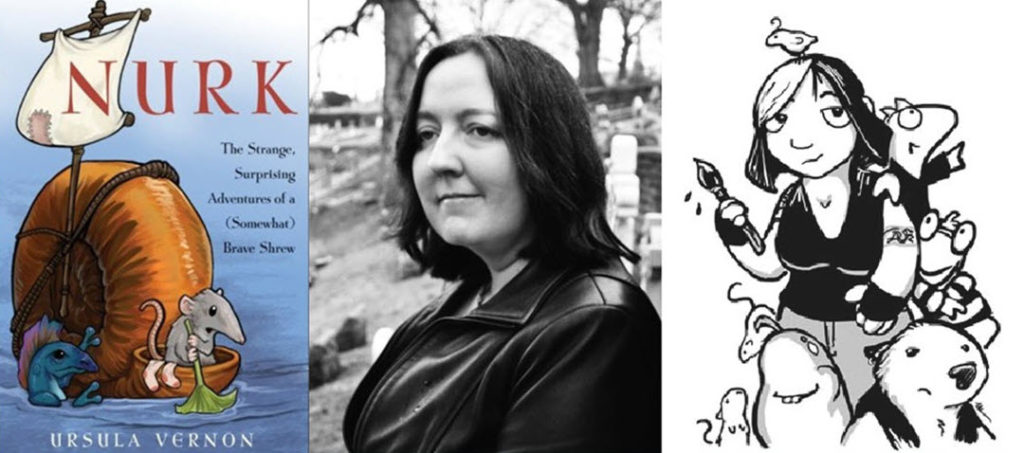
“She intrigued me and I wanted to know more
about this person – only to find she is quite the
person, possessing a full range of wit,
talent, curiosity, and humor.“
My childhood reading was almost entirely of the magical or historical sort. The Oz books by L. Frank Baum were a mainstay as was a wonderfully old copy of Bullfinch’s Mythology. Narnia, Middle Earth, Pern, Earthsea . . . all came much later. For me the universe of imagination was filled with early 20th-century and ancient classic mythologies. Too young to hear the sly wit and irony within Baum’s writing or see the androgynous, sexualized undertones of Neill’s illustrations, and too unknowing about adult ways to think Zeus’ carrying off of nymphs or Circe’s entrapment of Odysseus and his men to be anything but an adventure story, I was fortunate to grow up truly innocent of heart.
 Now, as Dante put it at the beginning of his Divine Comedy, “midway through the course my life”, when the “dark wood” is the complexity of adulthood and the onslaught of 21st century information age, it is less easy to retain one’s innocence or find it in storytelling. Angst, personal and global horrors, war, and violence in all manner of relationships, individual, collective, political, and whatnot, fill our many-formatted screens, our reading matter, and our lives. We bewail the loss of innocence yet so often do nothing to foster its existence.
Now, as Dante put it at the beginning of his Divine Comedy, “midway through the course my life”, when the “dark wood” is the complexity of adulthood and the onslaught of 21st century information age, it is less easy to retain one’s innocence or find it in storytelling. Angst, personal and global horrors, war, and violence in all manner of relationships, individual, collective, political, and whatnot, fill our many-formatted screens, our reading matter, and our lives. We bewail the loss of innocence yet so often do nothing to foster its existence.
So I was surprised and delighted to come across artist/writer/illustrator Ursula Vernon. This Wikipedia link refers to her as a creator of web comics and children’s books. I first came upon her as none of these things. I’d read a quote of hers somewhere which impressed me with its casual, tossed-off tone and fiercely tender insight, and which, I am embarrassed to say, I cannot now recall. She intrigued me and I wanted to know more about this person—only to find she is quite the person, possessing a full range of wit, talent, curiosity, and humor.
Vernon describes herself on her deviantART page as a “painter and a children’s book author.” She is very much more than that—human, sarcastic, fierce, whimsical, funny—but this post is not intended as an hagiographic advertisement. You can discover her for yourself via her website (and blog), Red Wombat Studio and Twitter (damn, she can be wickedly funny!).
Vernon writes under that surname (children’s books, the stunning webcomic Digger [1] and for adults as T. Kingfisher. The managing editor of M Parker Editing, Michelle Parker, has this insightful take on Vernon:
“The thing I love best about @UrsulaV‘s reworked fairy tales is how she reframes them using incredibly relatable POV characters as the lens, allowing readers to engage w/even the most absurd of stories. She is so good at bringing a deeply human element to the fantastical.” [2]
Here, I just want to natter on a bit about a book she published in 2008. It’s called Nurk. [3] It took me all of an hour to read and left me all hug-myself-happy and charmed. A book that can do that simple thing is a good book indeed. Happy and charmed: a neat little pair of emotions with which to begin any day.
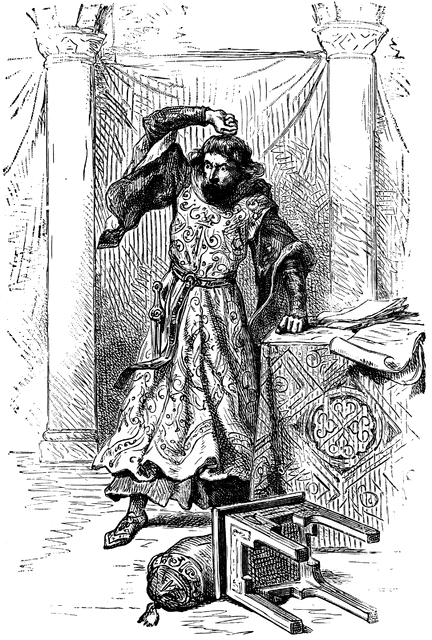 I’ve read many children’s books and, as I began this post noting, many notable works of imaginative fiction. And I am a rather angry reader as a rule. That is, it doesn’t take much for a book to lose my interest or respect. As a former English teacher and theater major, and long-time information professional and educator (specializing in text analysis and classification) and an online librarian (specializing in research methods and building critical thinking skills), I cannot help but see the cracks in the scenery, the clunking of labored prose, the behind the scenes machinations of the making of a story.
I’ve read many children’s books and, as I began this post noting, many notable works of imaginative fiction. And I am a rather angry reader as a rule. That is, it doesn’t take much for a book to lose my interest or respect. As a former English teacher and theater major, and long-time information professional and educator (specializing in text analysis and classification) and an online librarian (specializing in research methods and building critical thinking skills), I cannot help but see the cracks in the scenery, the clunking of labored prose, the behind the scenes machinations of the making of a story.
I’ve been known to throw a book to the wall (violently) when something about it irks me on any one of many levels. It takes a really good writer to get past my wall of critical defenses. (And I am not saying this is the right way to read. I would love to be able to lose myself in any book I pick up, but me being me, it just isn’t possible.)
So . . . Nurk.
“Nurk is a quiet homebody of a shrew. But when a mysterious plea for help arrives in the mail, he invokes the spirit of his fearless warrior-shrew grandmother, Surka, and sets off to find the sender.” [from Vernon’s page on Nurk]
 Immediately upon reading the first page, my hackles twitched. I could hear hobbit and hitchhiker’s guide and all manner of many coy literary allusions. But something Vernon does, and does very well, managed to deflect my inner critic. She has the ability to make it all look and feel quite effortless.
Immediately upon reading the first page, my hackles twitched. I could hear hobbit and hitchhiker’s guide and all manner of many coy literary allusions. But something Vernon does, and does very well, managed to deflect my inner critic. She has the ability to make it all look and feel quite effortless.
Of course, the book seems to say, of course you are going to think of Bilbo Baggins when you read of a tiny little homebody shrew who loves all manner of food and comforts and whose legendary grandmother, the hero Surka, echoes Bilbo’s mother, Belladonna Took, “the ‘remarkable’ ninth child, and eldest daughter, of the Old Took and his wife Adamanta.” Stories about heroes, even those about tiny hobbits or even tinier shrews, should echo each other. That sensibility of the hero as a historic constant is why we love these stories in the first place.
What Vernon does is reduce the Great Hero Drama to the matter-of-fact, wee universe of shrews, dragonflies, and mushrooms. And does so in a way that rekindles the emotions of what it is to be heroic via very small and simple actions. Nurk, unlike Mr. Baggins, has suffered tragedy, and his existence as a small mammal in a large world of predators makes timidity a logical act of self preservation. Yet within this timid heart is an heroic longing to do something grand. And this grand act begins as the momentous decision to return a mis-delivered letter.
I cannot tell much more of the tale without giving it way altogether, so I will let you explore it yourself. But I can say much about Vernon’s writing style, which is simultaneously simplistic in presentation and slightly tilted. Her humor is sly and modern. On the one hand there is a kind of knowing wink towards the reader about these little funny creatures and their small worries and greater fears, while at the same time there is a genuine affection for them all, even the villainous mole. There is a breezy flow to her storytelling. And although one pretty much knows all will be be well, it’s not a given. What tickled me is that I found I really was in suspense about not just how it would end, but how it all would play out. I haven’t read a “kid’s book” that had me actually caring about “things” since I was, well, a kid!
The illustrations are a delight as well. Inked in black on a flat white background, the line of her art is strong and easy in appearance. Whimsy abounds while cutesy is avoided (though cute isn’t). The creatures in this world are familiar and, in the case of the dragonflies, also very much not. Vernon’s sense of humor in relation to the representation of animals manifests the absurd blended with the deeply funny, even tender. And all are terrifically and confidently executed. You can get a sense of her overall approach on her Selected Artwork page here.
It must needs be mentioned that while Vernon refers to herself as a children’s book author and illustrator, she is a great deal more. Her genre is not herself. She is, in all the best ways, an Explorer who adventures out into imagined places and reports like a proper anthropologist.
WikiFUR writes this about her:
“Ursula’s work uses a range of styles, sometimes realistic, sometimes humorous and cute. One of her recurring themes is Gearworld, a world that juxtaposes the organic and the inorganic. Gearworld is a recurring theme in the work of Ursula Vernon. It is typified by eroded concrete, iron, gears, and the melding of organic and inorganic – Steam pipe tree, for instance, or fish that live in glass tubes bolted to the walls. Gearworld is vast and changeable – the normal rules of the world do not apply consistently, or in some cases at all. It is inhabited by a range of peoples, some fantastic, others mundane, all of whom remain to be explored.”
In addition to several other books (see her website for more on these), Vernon has done two other things worth mentioning. First, she and her partner Kevin host a weekly podcast titled Kevin and Ursula Eat Cheap. Each week they review a range of pre-packaged foods and then rate them. Archives and updates to the show are available here.
Second, she posted a very important piece on her blog about the sexual harassment that took place in 2013 at a Con she does not name. Titled “On Con Sexual Harassment – Being An Ally Is Freaky As Hell“, she reported on something that happened and what she tried to do about it and what the folks running the Con did in positive response. Her post set off an extended conversation in many venues. I thank her and laud her for what she did and that she made it all public.
“Keeping it real” is a corny cliche, but this is just what Vernon does. She reminds me of another Ursula who was noted for her realness and her bravery and deep imagination in writing, in opining, and in world-making: Ursula K. Le Guin. Their respective works are, in many ways, quite different, but in their quality of imagination and excellence of expression and execution, they are very much alike.
ABOUT BOOK THOUGHTS
“Book Thoughts” is an intermittent column within my blog. The essays are not so much book reviews as a book responses. I like to converse with and around the books I read.
HOW TO CITE THIS POST
Jablonski, J.A. (2021, Oct 25). Ursula Vernon | Nurk: The Strange, Surprising Adventures of a (Somewhat) Brave Shrew. Blog post. J.A. Jablonski (website). https://jajablonski.com/2021/10/25/vernon-nurk/
IMAGE CREDITS
Cover of Nurk by Ursula Vernon. From Vernon’s website, Red Wombat Studio.
Portrait of Ursula Vernon. From Vernon’s website, Red Wombat Studio.
Self-drawn portrait of Ursula Vernon with characters. From Vernon’s website, Red Wombat Studio.
Dante Alighieri. In a Gloomy Wood. Artist: Gustave Doré. From the From OldBooks.org.
[King] John’s Anger after Signing Magna Charta. From Charlotte M. Yonge’s Young Folks’ History of ENgland (Boston: D. Lothrop & Co., 1879, pg. 101). Posted at ClipART ETC of the Florida Center for Instructional Technology.
SOURCES
[1] Vernon, Ursula. (2003-2011). Digger. Web comic version. Print version from Sofawolf Press.
[2] Parker, M. (aka Chelle). (2021, Nov 16). Twitter post.
[3] Vernon, Ursula. (2008). Nurk: The Strange, Surprising Adventures of a (Somewhat) Brave Shrew. Harcourt Children’s Books.





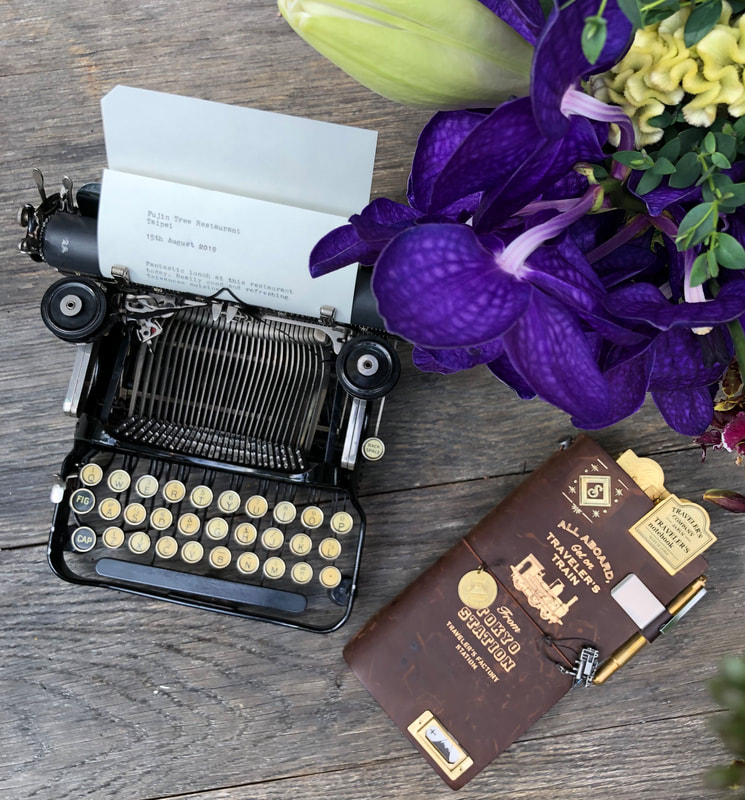









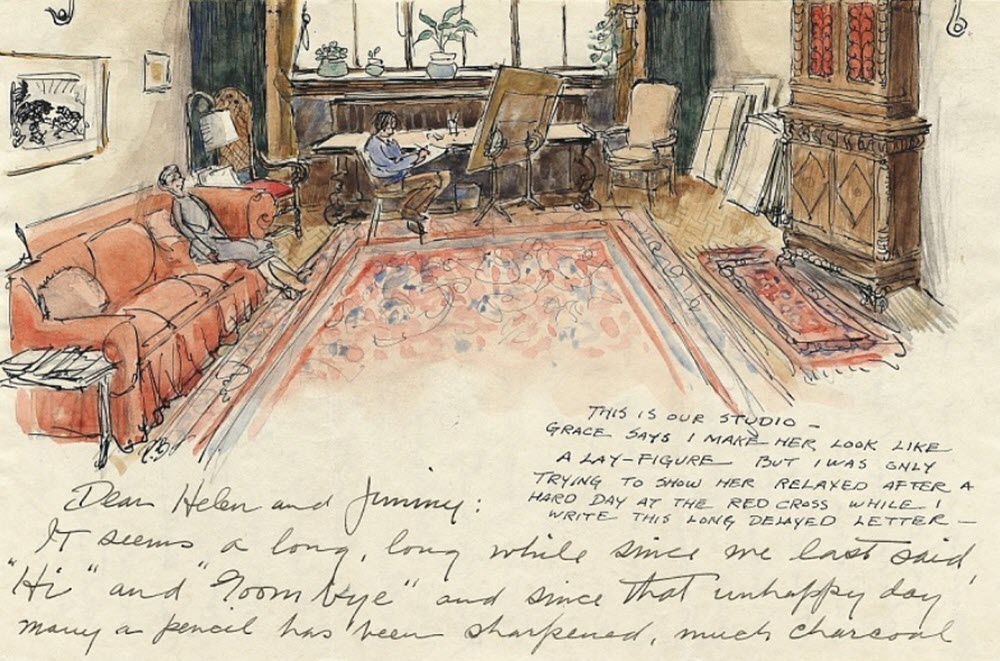

 The final paragraph of the Introduction urgently notes the loss of these material treasures that are “all but disappearing from our culture.” I am less convinced that this is so. The
The final paragraph of the Introduction urgently notes the loss of these material treasures that are “all but disappearing from our culture.” I am less convinced that this is so. The  A delightful cousin of illustrated letters is the so-called epistolary novel. The classic is Pamela by Samuel Richardson (1740).
A delightful cousin of illustrated letters is the so-called epistolary novel. The classic is Pamela by Samuel Richardson (1740).


 The story opens with Will taking best friend Maisie to the High-Low Club for an evening on the town. The club is glamorous but seedy, clearly a haven for nefarious doings of all sorts. It becomes the focus of the plot and the continuously fractured romance between Will and Kim. While at the club Will meets a one-time military compatriot. Kim, who initially is as unreliable, and irresistible, makes use of Will’s connection, turning the bookseller’s finally neatened world into one more secretive, criminal, and underhanded.
The story opens with Will taking best friend Maisie to the High-Low Club for an evening on the town. The club is glamorous but seedy, clearly a haven for nefarious doings of all sorts. It becomes the focus of the plot and the continuously fractured romance between Will and Kim. While at the club Will meets a one-time military compatriot. Kim, who initially is as unreliable, and irresistible, makes use of Will’s connection, turning the bookseller’s finally neatened world into one more secretive, criminal, and underhanded. 
